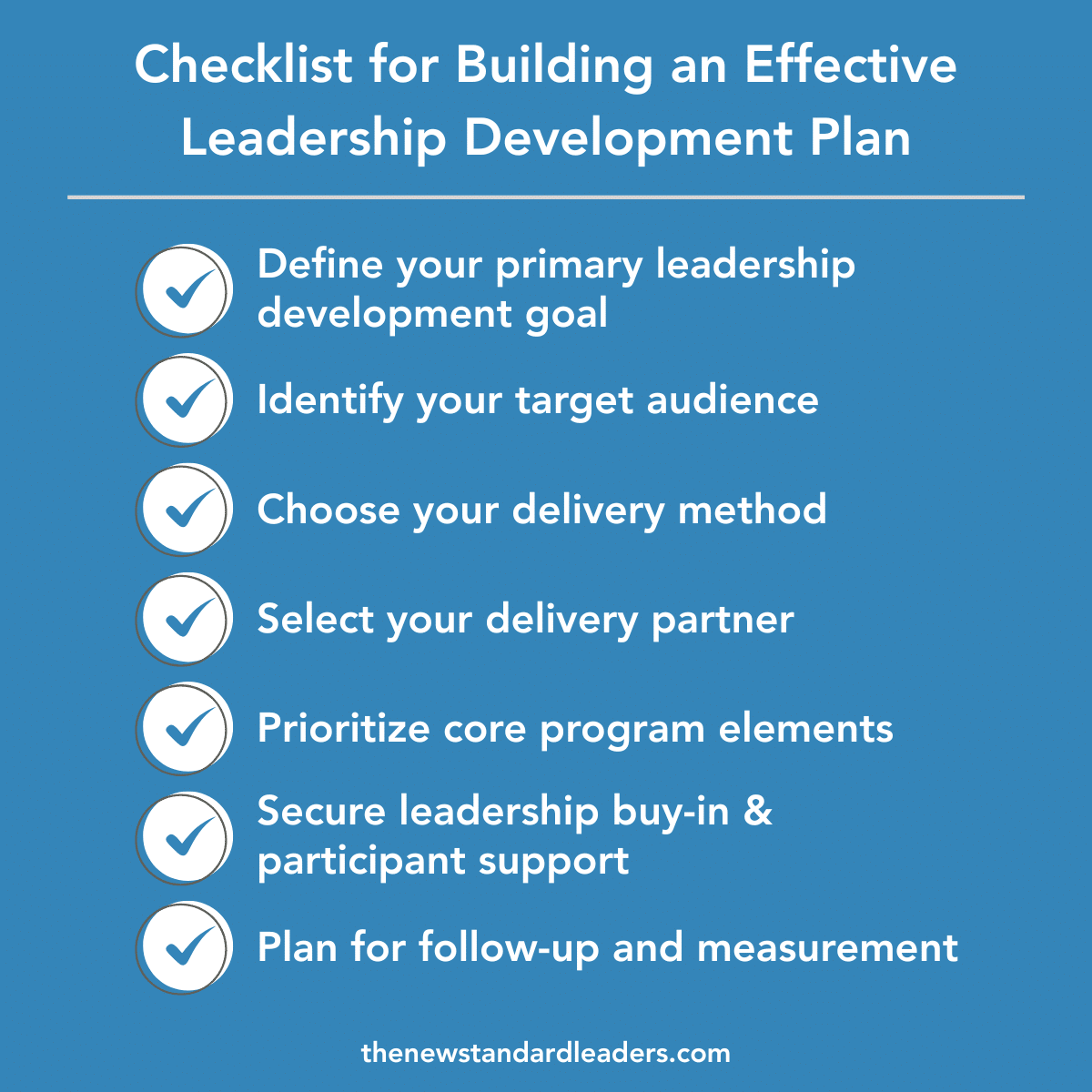Whether you’re leading a team or shaping talent strategy behind the scenes, you know firsthand how critical strong leadership is to team performance and organizational success. But when it comes time to invest in development, the options can feel overwhelming. From off-the-shelf webinars to immersive, year-long programs, how do you find the best leadership development program for your team?
Let’s break it down, not with corporate jargon, but with real talk, research-backed insights, and a step-by-step guide that actually makes the decision process easier.
What Is Leadership Development and Why Does It Matter?
The meaning of leadership development goes beyond just training managers to supervise teams. At its core, leadership development is the process of building the mindset, behaviors, and skills that enable individuals to lead others, and themselves, more effectively. This often includes strengthening competencies like emotional intelligence, strategic thinking, communication, and the ability to influence across levels.
The benefits of leadership development are well-documented: stronger business performance, higher retention of talent, and a healthier organizational culture. And when the stakes are high, the impact is even more clear.
According to a McKinsey study:
According to a 2024 report by the Association for Talent Development (ATD), 77% of organizations offer leadership development programs. A 2024 Deloitte study found that 73% of private companies plan to increase investment in talent development this year.
These numbers signal a clear shift: leadership development is becoming a standard expectation, not a differentiator. If your organization isn’t prioritizing it, you’re at risk of falling behind, both in performance and in attracting top talent.
Since leadership development is essential, the next question is: how do you do it right? It all starts with knowing what you’re aiming for.
Step 1: Start with Your Leadership Development Goals
Too often, organizations jump into launching a program without first asking: what are we trying to solve?
Before evaluating providers, clarify your leadership development goals. Common ones include:
- Strengthening leadership pipelines for succession planning
- Enhancing employee engagement and retention through stronger people managers
- Equipping leaders to drive change or scale growth
- Supporting newly promoted managers in developing confidence and clarity
At The New Standard, we design programs that help leaders make real progress on their clearly defined development goal. This is a key reason our clients see sustained behavior change and measurable business results. So getting clarity around goals is essential.
If you don’t know your goal yet, conduct a needs assessment: interview leaders at different levels of the organization, review engagement surveys, performance metrics, or even 360 feedback. The right program should be tied directly to the gaps your organization wants to close.
Step 2: Understand the Options
Once you’ve defined your goals, you can assess what type of program fits. Some questions to ask:
- Do we need something custom or off-the-shelf?
- Are we investing in senior execs, mid-level managers, or high-potential emerging leaders?
- Do we want in-person, virtual, or hybrid delivery?
- Do we want a cohort model to build peer relationships, or one-on-one coaching?
This is also where it’s helpful to explore different leadership development program companies, and note, they’re not all created equal. Look for companies with:
- A proven track record and client testimonials
- Programs grounded in real behavioral science
- Flexibility to tailor to your culture and context
- Measurement tools that track behavior change, not just satisfaction scores
Depending on your organization’s needs, you may want a program with a specific emphasis, whether that’s preparing leaders to navigate change, building more collaborative cross-functional teams, or strengthening leadership confidence. Some companies also offer targeted solutions, such as a leadership program for women, which supports rising leaders in overcoming common advancement barriers and contributes to a more diverse leadership pipeline.
The key is to align the program’s strengths with your team’s specific goals and to choose a partner that understands the realities your leaders are facing.
Step 3: Evaluate the Experience
The most impactful programs go beyond content. They create a journey that helps leaders practice, reflect, and evolve over time.
Look for elements like:
- Coaching — Individual or group coaching drives accountability and deeper, lasting impact.
- Peer learning — A cohort of peers provides challenge and support.
- Behavioral assessments — Tools like 360s or DiSC give data-backed insights.
- Real-time application — Leaders should apply what they learn to real work challenges.
- Manager involvement — Support from participants’ managers is crucial for sustainability.
In short: the most effective programs don’t just teach leadership skills. They develop leaders from the inside out.
Step 4: Review Outcomes Not Just Activities
Don’t be dazzled by buzzwords or big-name speakers. Ask: how will this program measure success?
Great programs show real results. A few indicators to look for include:
- Growth in key leadership behaviors among participants
- Improvements in team engagement or retention
- Tangible shifts in performance or culture
Looking at these outcomes will help you determine whether the program is truly making a difference.

Leadership Development Plan Example & Your Go-To Checklist
Whether you’re building your own internal program or vetting external partners, use this simplified framework as both a leadership development plan example and a practical checklist to guide your decision-making.
Each step reflects what’s essential in designing a program that actually works, one that aligns with your strategy, supports your people, and drives real results.
✅ 1. Define Your Primary Leadership Development Goal
What are you trying to solve or shift? Are you preparing future leaders, strengthening manager capabilities, or building change-ready teams?
→ Example: “Develop high-potential managers into strategic, cross-functional leaders.”
✅ 2. Identify Your Target Audience
Clarify who the program is for. Tailoring your approach depends heavily on this.
→ Options: First-time managers, senior executives, emerging leaders, or a blended cohort.
✅ 3. Choose Your Delivery Method
Think about what works best for your team and goals:
→ In-person for deep connection, virtual for flexibility, or hybrid for the best of both.
✅ 4. Select Your Delivery Partner
Will this be built internally or supported by an external provider?
→ Look for leadership development program companies with a proven track record, customizable offerings, and measurement tools that go beyond satisfaction surveys.
✅ 5. Prioritize Core Program Elements
Decide which components matter most based on your goals and audience.
→ Options include: personalized coaching, 360 assessments, action learning projects, cohort-based learning, and real-time feedback.
✅ 6. Secure Leadership Buy-In & Participant Support
Without senior-level advocacy and team support, even the best programs fall flat.
→ Make sure your leaders are invested, and participants are prepared to engage fully.
✅ 7. Plan for Follow-Up and Measurement
What does success look like — and how will you know if you’ve achieved it?
→ Include post-program coaching, pulse surveys, and behavior-change metrics to track ROI over time.
Final Thoughts: You’re Building the Future
The best leadership development programs help leaders show up with greater clarity, confidence, and influence. Whether you’re developing one manager or an entire cohort, it all starts with asking the right questions.
If you want a partner who designs for real behavior change. not just box-checking, we’d love to talk.
The New Standard: Leadership Development, Elevated
At The New Standard, leadership is about stepping forward with purpose, communicating with clarity, and driving real impact.
Our unique approach blends evidence-based curriculum, executive coaching, and peer accountability into immersive programs that drive real behavior change and measurable business results.
What sets us apart is our deep focus on mid-level and emerging leaders, the often-overlooked engine of transformation within organizations. Through programs like Accelerate and Fast Track, we help leaders claim their value, expand their influence, and shape what’s next.
We don’t believe in one-size-fits-all. Every program is backed by science, personalized through assessments and coaching, and designed to challenge assumptions, build strategic capacity, and strengthen leadership presence.
This isn’t surface-level development. It’s leadership, redefined.
This is The New Standard.

